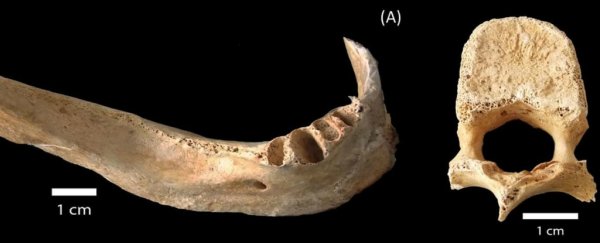At 8:15 am on August 6, 1945, the United States dropped the first combat atomic bomb, "Little Boy." It exploded 43 seconds later, creating a massive fireball that incinerated much of Hiroshima.
Nearly 350,000 people were in the Japanese city that day, and most were civilians.
Twenty-seven years later, a scientist from across the Pacific Ocean arrived in Hiroshima with what was considered then a novel idea.
Brazilian physicist Sérgio Mascarenhas, at the time a visiting professor at Harvard University, said that exposure to radiation makes human bone magnetic, and that "magnetic memory" existed in the bones of atomic bombing victims years after the explosion.
Scientists could measure radiation exposure by examining the bones of victims, Mascarenhas proposed.
With the help of two Japanese scientists in Hiroshima, Mascarenhas obtained several samples of victims' bones, including a jawbone that belonged to a person who was less than a mile away from Ground Zero.
They were able to estimate the amount of radiation present in the bones, according to a paper Mascarenhas presented to the American Physical Society meeting in April 1973 in Washington, but specific calculations could not be achieved with 1970s technology.
Mascarenhas brought the samples home to Brazil, where they sat in storage for the next four decades - until two other Brazilian scientists continued his research using more advanced technology. The result was astonishing.
Using a technique called electron spin resonance, the researchers measured that the jawbone had absorbed 9.46 grays of radiation from the Hiroshima attack. (A gray or Gy is a unit used to measure the amount of radiation absorbed by an object or a person.)
To place this in context: A cancer patient receiving radiotherapy treatment is exposed to about 2 to 3 grays on a very localized part of the body where a tumor is located.
Whole-body radiation with about 5 grays - nearly half of the amount calculated from the jawbone - is enough to kill a person, Oswaldo Baffa, one of the researchers and a professor at the University of São Paulo, told The Washington Post Tuesday.
Teeth have been used to measure the amount of radiation a person had been exposed to.
In 1997, scientists from Taiwan measured the radiation dose that patients with nasopharyngeal cancer (in which cancer cells form near the throat behind the nose) had absorbed from radiotherapy by examining their jawbones.
But the researchers in Brazil said this is the first time that bones were used to precisely measure the amount of radiation absorbed by atomic bombing victims.
"Many papers have dealt with reconstruction of the radiation dose received during radiological accidents.
However, the samples analyzed in this work have important historical value because they belong to fatal victims of the first and only moment in history when nuclear weapons were used against civilian targets," according to the research paper published in February by the Public Library of Science.
The researchers said their findings are timely and significant, given the risk of terrorist attacks in some countries, including the United States.
"Imagine someone in New York planting an ordinary bomb with a small amount of radioactive material stuck to the explosive," Baffa told a Brazilian science news site this week.
"Techniques like this can help identify who has been exposed to radioactive fallout and needs treatment."
The research, borne out of Mascarenhas's earlier findings, was the postdoctoral work of Baffa's former student, Angela Kinoshita, now a professor at University of the Sacred Heart in Brazil.
The sample, which had been stored in a box in a laboratory, was first washed and oven-dried. A portion of the sample was then crushed with a mortar and pestle. The researchers exposed several portions of the sample to certain amounts of radiation.
Using a spectrometer and computer software and a combination of different techniques, they calculated the amount of radiation that the victim was exposed to in 1945.
"When one imagines all the processes involved in an episode such as this, there were many doubts about the possibility of using this methodology to determine the [radiation] dose deposited in these samples," Kinoshita said.
"This work demonstrates this possibility and may open several possibilities for future work that may analyze details of this nuclear attack that can be clarified with the determination of these doses."
The Post was unable to reach Mascarenhas, who is nearing his 90s and has retired. But, his research is not over, he told the Brazilian science news site.
"The measurement we obtained in this latest study is more reliable and up to date than the preliminary finding, but I'm currently evaluating a methodology that's about a thousand times more sensitive than [electronic] spin resonance," he said.
"We'll have news in a few months."
Between 90,000 and 166,000 people died after the Hiroshima bombing. Another 60,000 to 80,000 died in Nagasaki, where the United States dropped a second atomic bomb on August 9, 1945.
2018 © The Washington Post
This article was originally published by The Washington Post.
